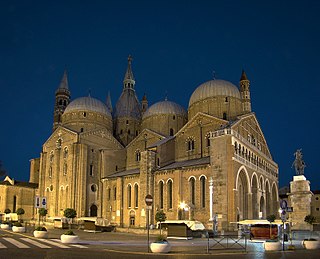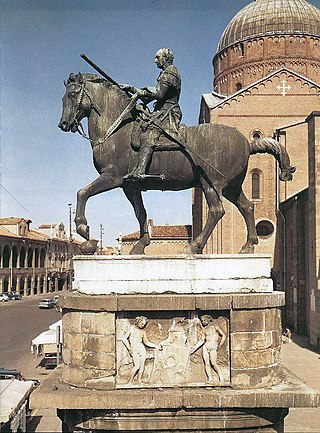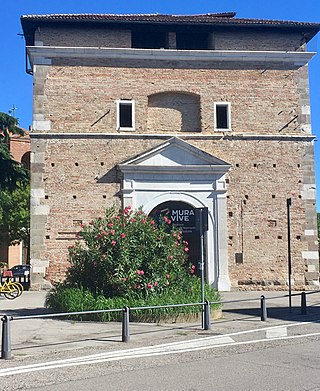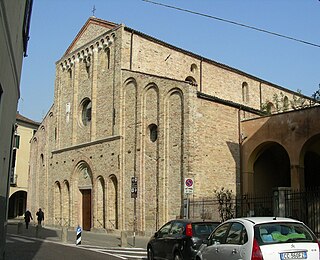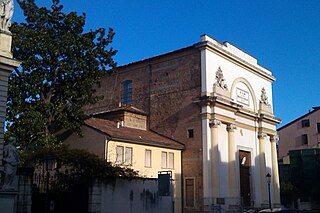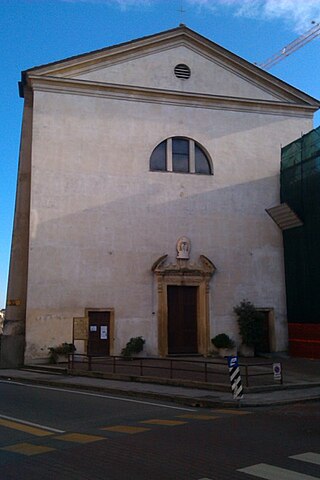Self-guided Sightseeing Tour #5 in Padua, Italy
Legend
Guided Free Walking Tours
Book free guided walking tours in Padua.
Guided Sightseeing Tours
Book guided sightseeing tours and activities in Padua.
Tour Facts
7 km
92 m
Experience Padua in Italy in a whole new way with our free self-guided sightseeing tour. This site not only offers you practical information and insider tips, but also a rich variety of activities and sights you shouldn't miss. Whether you love art and culture, want to explore historical sites or simply want to experience the vibrant atmosphere of a lively city - you'll find everything you need for your personal adventure here.
Activities in PaduaIndividual Sights in PaduaSight 1: Chiesa delle Dimesse
The church of Santa Maria Assunta delle Dimesse better known as the church of the Dimesse is a seventeenth-eighteenth century religious building that stands in Contrà delle Dimesse in Padua. The church is part of the College of the Noble Dimesse founded in 1615.
Sight 2: Chiesa del Torresino
The Madonna Addolorata al Torresino, also called the Santa Maria del Pianto or Santa Maria del Torresino is a Roman Catholic parish church located in the city of Padua, region of Veneto, Italy.
Sight 3: Chiesa di Santa Maria in Vanzo
Santa Maria in Vanzo is a Renaissance-style, Roman Catholic church in Padua, region of Veneto, Italy.
Sight 4: Chiesa di San Luca Evangelista
The church of San Luca Evangelista is a religious building of medieval origin located in Via XX Settembre, in the historic center of Padua. It was originally dedicated to the twelve apostles.
Sight 5: Palazzo Emo Capodilista
Palazzo Capodilista is a historic building in Padua, Italy.
Sight 6: Church of St. Daniel
San Daniele is a Roman Catholic church and monastery in Padua, region of Veneto, Italy.
Sight 7: Loggia Amulea
The Loggia Amulea is a neo-Gothic style palace located in Prato della Valle, the largest square in Padua. The building was the headquarters of the Padua fire brigade from 1906 to 1989; later it houses some municipal offices. The front of the building is characterized by an elegant loggia; In the room adjacent to the large balcony, civil weddings are sometimes celebrated.
Sight 8: Chiesa di Santa Maria delle Grazie
The church of Santa Maria delle Grazie is a sixteenth-century building of worship located in Padua in Via Luigi Configliachi, near the intersection with Via Cavalletto, between the area of Vanzo and the ancient village of Santa Croce.
Sight 9: Abbey of Santa Giustina
The Abbey of Santa Giustina is a 10th-century Benedictine abbey complex located in front of the Prato della Valle in central Padua, region of Veneto, Italy. Adjacent to the former monastery is the basilica church of Santa Giustina, initially built in the 6th century, but whose present form derives from a 17th-century reconstruction.
Sight 10: Orto Botanico di Padova
The Orto Botanico di Padova is a botanical garden in Padua, in the northeastern part of Italy. Founded in June 1545 by the Venetian Republic, it is the world's oldest academic botanical garden that is still in its original location. The garden – operated by the University of Padua and owned by the Italian government – encompasses roughly 22,000 square meters (240,000 sq ft), and is known for its special collections and historical design.
Sight 11: Placido Cortese
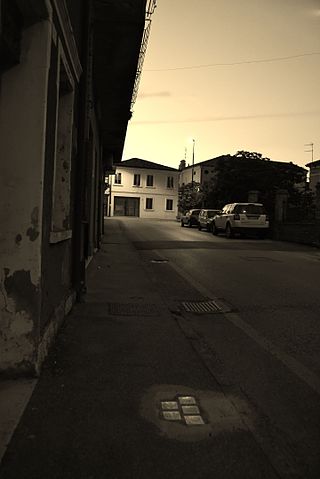
The list of stumbling stones in Veneto contains the list of stumbling stones placed in Veneto. They commemorate the Venetian victims of the persecution of the Nazi-Fascist regime as part of an initiative by the German artist Gunter Demnig extended to the whole of Europe. The first stumbling stone in Veneto was placed in Venice on January 12, 2014 in memory of the deportees from the Jewish Rest Home in Cannaregio 2874.
Sight 12: Oratorio di San Giorgio
The Oratorio di San Giorgio or St George's Oratory is a Gothic-style Roman Catholic chapel or prayer hall in Padua, region of Veneto, Italy. It is notable for its frescoed interiors.
Sight 13: Cappella di San Giacomo (Altichiero)
The chapel of St. James or St. Felix is located in the basilica of St. Anthony in Padua. Initially it was dedicated to St. James, from whom it took its name: in 1503 the relics of Pope Felix II were moved here and therefore the chapel was dedicated to him.
Sight 14: Basilica di sant'Antonio Di Padova
The Pontifical Basilica of Saint Anthony of Padua is a Catholic church and minor basilica in Padua, Veneto, Northern Italy, dedicated to St. Anthony of Padua.
Sight 15: Monumento equestre al Gattamelata
The Equestrian Statue of Gattamelata is an Italian Renaissance sculpture by Donatello, dating from 1453, today in the Piazza del Santo in Padua, Italy. It portrays the condottiere Erasmo da Narni, known as "Gattamelata", who served mostly under the Republic of Venice, which ruled Padua at the time. It is the first full-size equestrian statue of the Italian Renaissance.
Sight 16: Loggia e Odeo Cornaro
The Loggia and Odeo Cornaro are two Renaissance buildings, built in the 16th century for the humanist Alvise Cornaro and hosting theater and music performances, locate in via Cesarotti 37 in Padua, region of Veneto, Italy. They are now part of the city's museums.
Sight 17: Porta Liviana
The Porta Liviana was one of the main gateways to the sixteenth-century walls of Padua. Also known as Porta Ponte Corvo, from the name of the place where it stands, it is called Liviana in honor of Bartolomeo d'Alviano, the Renaissance leader and strategist who designed the defenses of Padua.
Sight 18: Chiesa di Santa Caterina
Santa Caterina d'Alessandria is a small, Baroque-style, Roman Catholic church and convent located on via Cesare Battisti #245 in the city of Padua in the region of Veneto, Italy.
Sight 19: Santa Sofia
Santa Sofia is the oldest Roman Catholic church structure in the city of Padua, region of Veneto, Italy. It was built in the 10th century on the site of a presumed Mithraeum. A grant was made to bishop Sinibaldo of this church in 1123, which had already been in construction. The Romanesque stone and brick facade was constructed from 1106 to 1127, but the semicircular apse may date from earlier. The interior is now relatively bare.
Sight 20: Chiesa della Beata Vergine Maria Immacolata
The church of the Immaculate Madonna also known as the church of Santa Maria Iconia, is a religious building that stands in Borgo Portello, now Via Belzoni in Padua. The current building was built in the fifties of the nineteenth century on a previous medieval one, dedicated to Santa Maria Iconia which was first of the Knights Templar, then commandery of the Knights of Malta who rebuilt it, with San Giovanni Battista delle Navi, until the Napoleonic ecclesiastical suppressions. Inside is the body of Blessed Antonio Manzoni known as "the Pilgrim".
Sight 21: Chiesa di Ognissanti
The church of Ognissanti is a religious building of early medieval origin that stands in contrà Ognissanti, now via Ognissanti, in Padua. The church, built near a xenodochio, until the Napoleonic suppressions was part of a Benedictine monastic complex. Vincenzo Scamozzi worked on the restoration of the building in the sixteenth century.
Share
How likely are you to recommend us?
Disclaimer Please be aware of your surroundings and do not enter private property. We are not liable for any damages that occur during the tours.
GPX-Download For navigation apps and GPS devices you can download the tour as a GPX file.
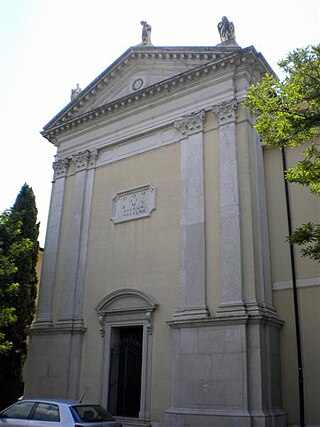
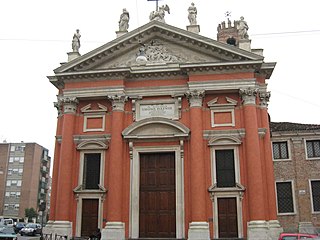
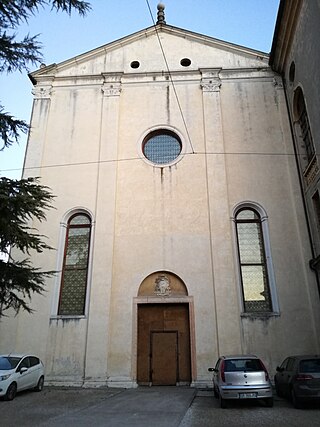
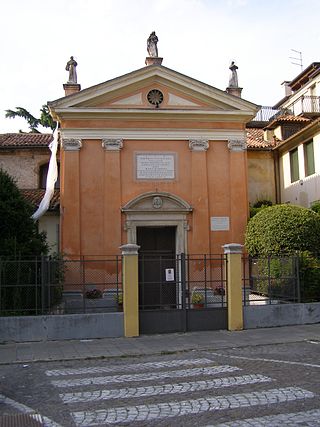

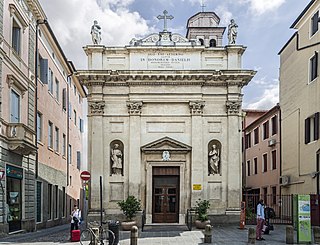

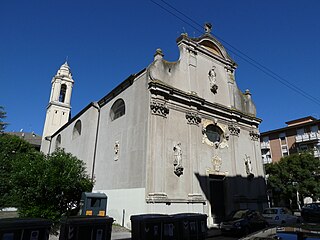
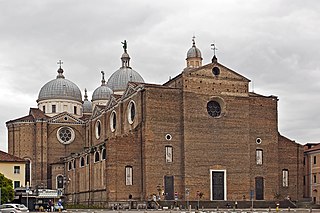
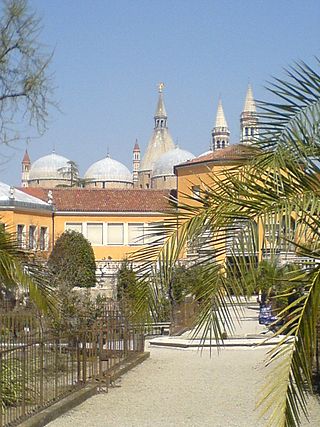
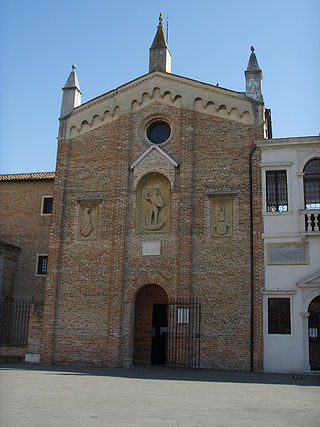
.jpg)
